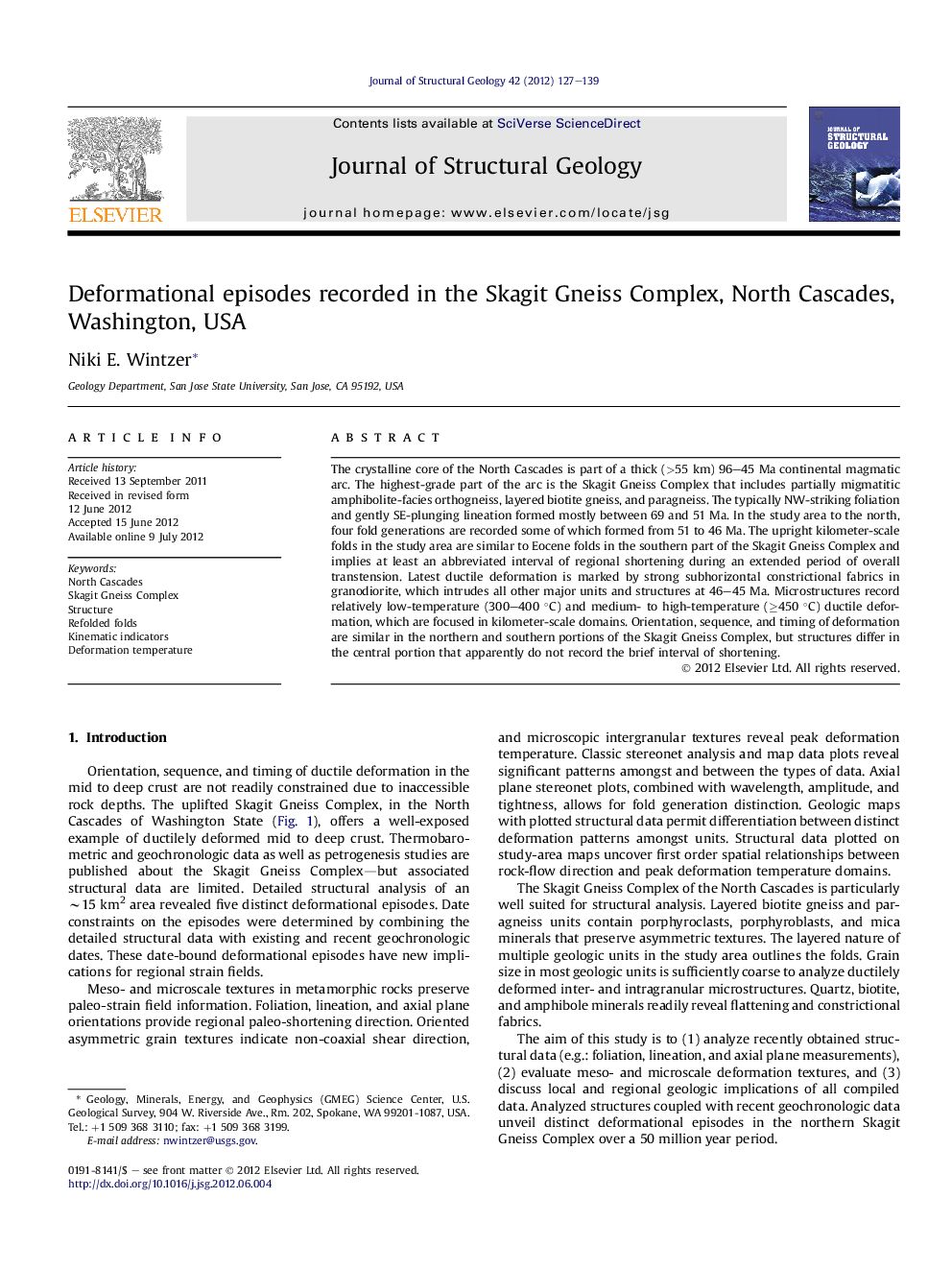| Article ID | Journal | Published Year | Pages | File Type |
|---|---|---|---|---|
| 4733410 | Journal of Structural Geology | 2012 | 13 Pages |
The crystalline core of the North Cascades is part of a thick (>55 km) 96–45 Ma continental magmatic arc. The highest-grade part of the arc is the Skagit Gneiss Complex that includes partially migmatitic amphibolite-facies orthogneiss, layered biotite gneiss, and paragneiss. The typically NW-striking foliation and gently SE-plunging lineation formed mostly between 69 and 51 Ma. In the study area to the north, four fold generations are recorded some of which formed from 51 to 46 Ma. The upright kilometer-scale folds in the study area are similar to Eocene folds in the southern part of the Skagit Gneiss Complex and implies at least an abbreviated interval of regional shortening during an extended period of overall transtension. Latest ductile deformation is marked by strong subhorizontal constrictional fabrics in granodiorite, which intrudes all other major units and structures at 46–45 Ma. Microstructures record relatively low-temperature (300–400 °C) and medium- to high-temperature (≥450 °C) ductile deformation, which are focused in kilometer-scale domains. Orientation, sequence, and timing of deformation are similar in the northern and southern portions of the Skagit Gneiss Complex, but structures differ in the central portion that apparently do not record the brief interval of shortening.
► I analyze structural data and apply it to regional-scale geology. ► I combine structural and geochronologic data to separate out deformational episodes. ► A previously unknown regional shortening interval is determined. ► A total of 5 distinct age-bound deformational episodes are distinguished. ► Deformation episodes are found broadly similar on the regional-scale.
